All bird species lay eggs. Since peacocks are birds, peacocks must lay eggs too, right?
The quick answer is no, peacocks don’t lay eggs. But this is only because most of us use the wrong term when referring to this species.
“Peacocks” don’t lay eggs for one simple reason: they’re the males of the species known as “peafowl.” The females, which do lay eggs, are known as “peahens.”
Read on to learn more about peafowl egg-laying and breeding!
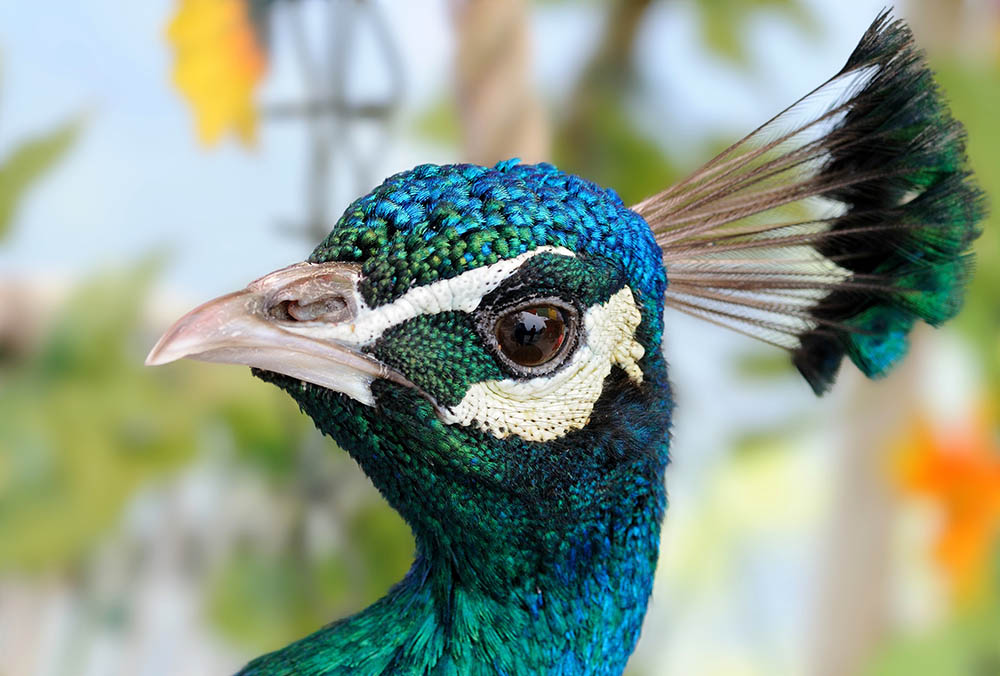
What Is a Peafowl?
Close relatives of pheasants, peafowl make up three avian species originating from the Indian subcontinent, Southeast Asia, and the Congo Basin in Central Africa. Their most common colors are blue (the Indian peafowl or Pavo cristatus) and green (the Southeast Asian peafowl or Pavo muticus).
Peafowl are known for their beautiful plumage, particularly the peacock’s long, extravagant tail feathers, which he spreads out in a large, fan-like shape during mating season to attract potential mates.
Peafowl are often inaccurately called “peacocks,” thus resulting in confusion when experts say “peacocks don’t lay eggs.”
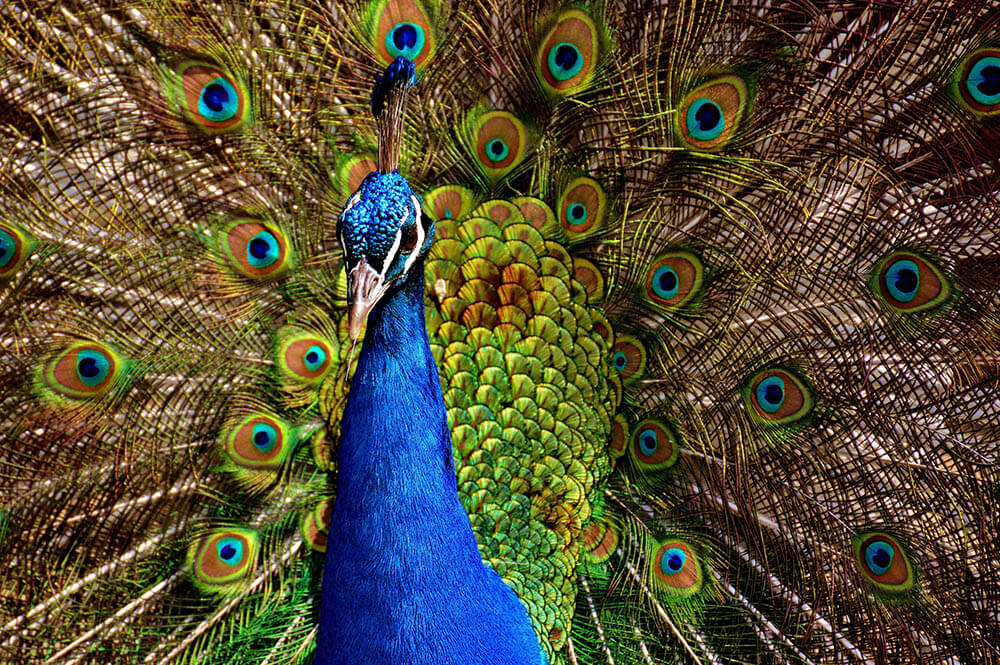
Mating and Fertilization
Peafowl are polygamous, meaning males typically mate with more than one female. On average, a peacock will have between four and five sex partners.
Mating season usually starts in the middle of spring and ends around late spring. During this time, peacocks establish leks – small territories situated near one another. They then perform courtship rituals, which involve strutting to and fro and shaking their feathers to create a rattling noise that garners female attention. And of course, they spread their tail feathers in the shape of a large fan, showing off their vibrant colors in the hopes of convincing a female to mate with them.
Peahens explore these various territories, closely examining each peacock’s display and feathers. If a specific male adequately impresses a female, she selects him as her mate.
Once a peahen makes her selection, her preferred male sits on her back. Both the males and females of this species have avian reproductive organs called cloacae; the male aligns his cloaca with the female’s, transmitting his sperm into her body. This sperm journeys up her uterus and then fertilizes her egg.
Laying Eggs
Most peahens don’t produce eggs until they’re two years old. During her second and third years, a peahen will lay only a few eggs. It isn’t until she’s four years old that she’ll start laying between five and nine eggs annually.
In general, a peahen lays eggs during the course of 10 to 12 days, after which she starts the incubation period (which we’ll learn about in the next section).
Peafowl keepers, however, use a strategy to maximize the number of eggs a peahen lays. After producing her first clutch of eggs, a peahen normally stops laying more eggs so that she can focus on incubating said clutch. But if a keeper takes her eggs away from her, she may lay one or two more clutches for a possible total of about 30 eggs. While she’ll only be able to incubate ten or fewer eggs, the rest of the eggs can be incubated using a foster mother (such as a turkey hen) or artificial incubation.
When it’s time to lay eggs between spring and early summer, peahens often use thick shrubbery to nest. Peafowl keepers, however, can instead place peahens in a yard or pen.
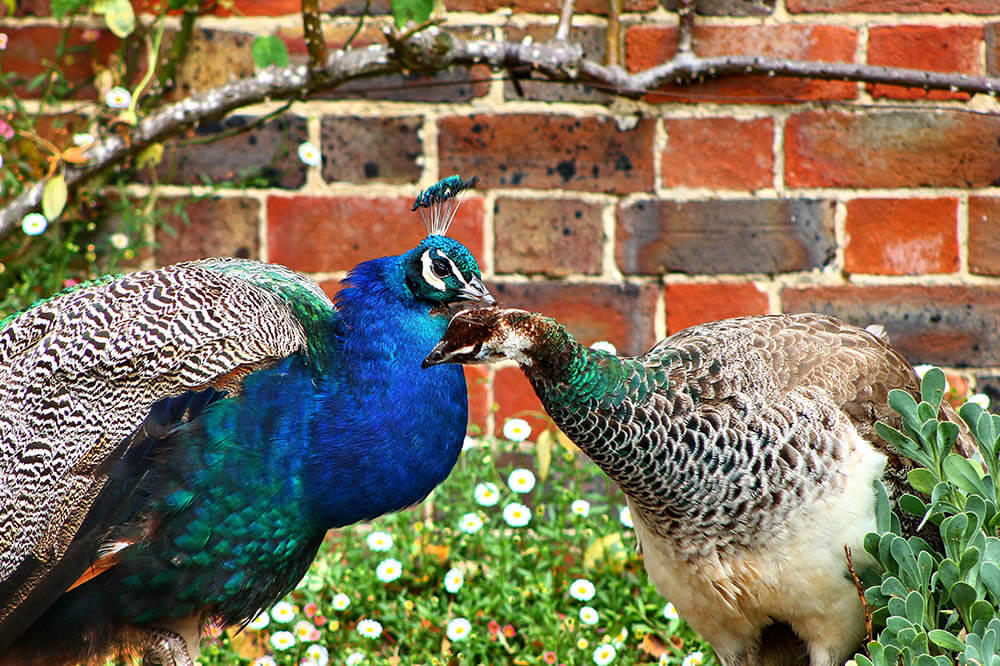
Incubation, Hatching, and Brooding
It takes between 28 and 30 days for a peahen to incubate her eggs.
How do peahens incubate their eggs? Like most birds, they sit on their eggs, which transfers heat from their body into an egg. This allows the unhatched peafowl chick to develop, grow, and take form during the aforementioned 28 to 30 days.
Peafowl keepers can let their peahens incubate their eggs either in the open or in a large confined space such as a coop. Younger peahens have trouble settling when confined, however. It’s for this reason a peafowl keeper may instead have a foster mother sit on the eggs. Another option is to go the artificial incubation route which entails the use of an incubation apparatus.
Once the peafowl chicks hatch, their mother will take care of them. Through vocalizations, body language, and examples, peahens teach their young important lessons, such as which foods they should eat and how to stay away from danger. Peahens are extremely protective of their offspring and won’t hesitate to use aggression to defend them from predators.
In captivity, it’s common practice to confine chicks with their mother for around a week, before giving the chicks the freedom to leave and return to their mothers whenever they want.
Some keepers also limit the mother’s movements. This is because peahens tend to roam large distances with their offspring, which increases the risk of the chicks getting harmed or lost during bad weather. When the chicks are six months old, however, their mother leaves them to let them fend for themselves.
Two other options include letting a turkey hen act as foster mother to peafowl chicks or rearing the chicks in confinement.
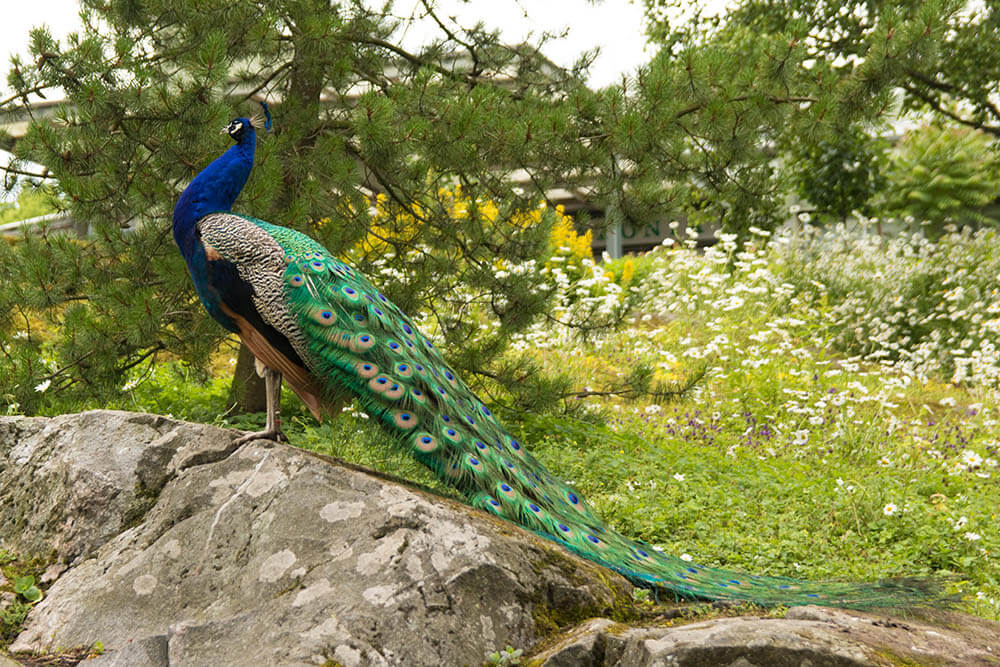
Fabulous Peafowl Facts
Curious about peafowl? Read on to learn more about these fantastic birds!
Their eggs look boring
Peafowl may be among the most beautiful animals on the planet, but there’s nothing extraordinary about their eggs.
The color of Indian peafowl eggs is “buff white,” which is a type of white with an extremely light blue tint. Southeast Asian peafowl eggs are much closer to pure white. Congo peafowl, on the other hand, lay buff-white eggs sporting small brown freckles.
Because peafowl are large birds, their eggs are bigger than chicken eggs.
Their eggs are fairly costly
Some people buy peafowl eggs intending to raise these birds. Others simply want to have those eggs for dinner. Whatever your reason for wanting to buy peafowl eggs, know that it can be fairly costly.
If you plan on making an Indian peafowl omelet, each egg can cost between $10 and $40. If you want to hatch peafowl, prices can range from $20 to over $100.
They’re long-lived
Peafowl are among the longest-lived birds on the planet. If given excellent care, a peafowl in captivity can live up to 40 or 50 years.
Peafowl fly
Peafowl fly, but they aren’t good at it. They don’t fly too high or for long distances; they ordinarily only use this ability to reach tree branches to perch on or cross obstacles such as rivers.
They’re noisy
Peafowl are extremely loud birds. They’re especially deafening in the wild, where they live in large groups and perform various vocalizations to communicate with one another.
Peafowl honk and emit high-pitched sounds resembling a shrill meowing or the crying of a baby. When a peafowl notices a predator entering its territory, it produces a quick squawk to warn its groupmates, which then echo the noise. This makes them good “watchdogs” in rural areas. These birds also squawk whenever they enter their habitat to announce their presence to their family and friends.
Peafowl are noisiest during mating season, during which peacocks scream and honk – sounds that peahens then echo.
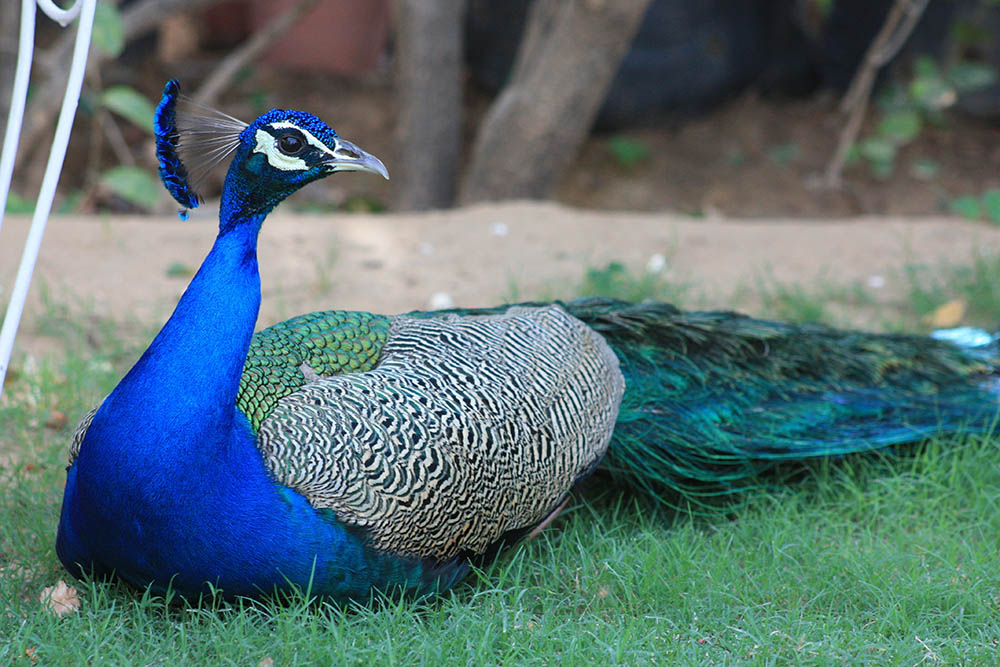
Conclusion
Because peacocks are male, they don’t lay eggs. However, peahens, which are the females of the peafowl species, do produce eggs like any other female bird.
We hope this article has answered your question and taught you more about the fascinating world of peafowl mating, breeding, and brooding!
